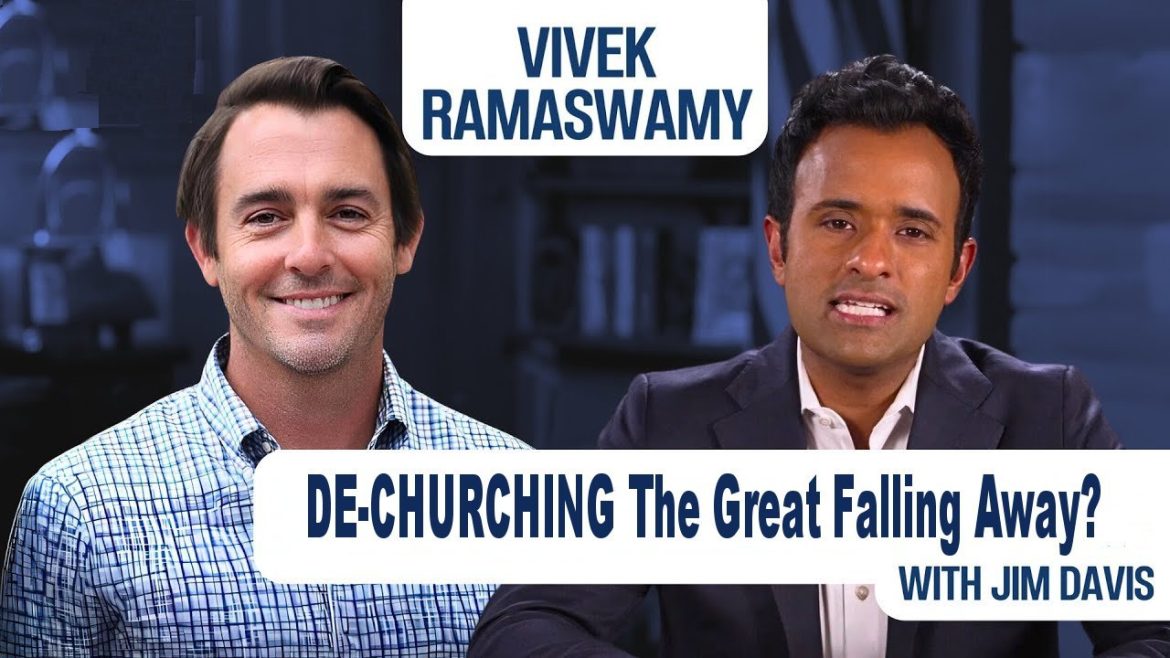Introduction
In recent years, the phenomenon of “dechurching” — the mass exodus of individuals from organized religious institutions — has reached unprecedented levels in the United States. Pastor Jim Davis refers to this as a crisis causing Americans to abandon their churches. This article delves into the multifaceted reasons behind this trend, explores the concept of the “falling away,” and discusses potential solutions to revive America’s faith and purpose.
Jesus Coming After the Falling Away
“Concerning the coming of our Lord Jesus Christ and our gathering together to Him, we ask you, not to be soon shaken in mind or troubled, either by spirit or by word or by letter, as if from us, as though the day of Christ had come. Let no one deceive you by any means; for that Day will not come unless the falling away comes first, and the man of sin is revealed, the son of perdition who opposes and exalts himself above all that is called God or that is worshiped, so that he sits as God in the temple of God, showing himself that he is God.“ 2 Thessalonians 2:1-4 NKJV
National Pride and Civic Identity
Decline in National Pride
Vivek Ramaswamy highlights a concerning trend: less than 16% of Gen Z express pride in being American. National pride is at an all-time low, mirrored by a significant recruitment deficit in the U.S. military. The decline in civic pride parallels a decrease in individual self-confidence, with increasing reports of depression, anxiety, and other mental health issues.
Erosion of Family Identity
Ramaswamy points out that the role of family in shaping individual identity has diminished. A significant number of children grow up in fatherless households, contributing to a sense of loss in family identity. This erosion in family and national identity is closely linked to the phenomenon of dechurching.
The Phenomenon of Dechurching
Pastor Jim Davis’ Insights
Pastor Jim Davis, a church leader, author of The Great Dechurching: Who’s Leaving, Why Are They Going, and What Will It Take to Bring Them Back? offers a deep dive into dechurching. He observed that many people who no longer attend church once did. A comprehensive study he commissioned revealed that this trend is not just localized but a nationwide shift, marking the largest and fastest religious transition in American history.
Casual vs. Casualty Dechurching
Davis categorizes dechurching into two main types:
- Casualty Dechurching: This group, accounting for about 10 million people, leaves due to negative experiences such as perceived hypocrisy, abuse, or racism within the church.
- Casual Dechurching: This more significant group, about 30 million strong, leaves for mundane reasons like moving to a new city, finding church attendance inconvenient, or becoming single parents.
Inflection Points Leading to Dechurching
Several historical events have contributed to the current state of dechurching:
- Fall of the Soviet Union: This event shifted the national enemies from godless atheists to religious fundamentalists, changing the cultural landscape.
- Rise of the Internet: The ability to research and explore different worldviews increased significantly.
- Rise of the Religious Right: The intertwining of religion and politics led some to abandon the church when they disagreed with the political stances.
- 9/11 Attacks: This shifted national sentiment from unity against atheism to caution against religious fundamentalism.
Social Media and Its Impact
Erosion of Institutional Trust
Social media has exacerbated the erosion of trust in institutions, including the church. The echo chambers created by algorithms amplify extreme views, isolating individuals and fostering a culture of mistrust. This has led to a significant decrease in church attendance, particularly among younger generations.
The Role of Technology
While technology has benefits, it also poses challenges. Davis notes that his church stopped streaming services to emphasize the importance of in-person worship. This decision led to increased attendance, highlighting the need for embodied worship experiences.
The Church’s Response
Strategies for Revival
To address dechurching, churches must return to their foundational principles:
- Leadership and Community: Churches should have leadership that knows and cares for their congregation, fostering genuine community.
- Discipleship and Worship: Focusing on discipleship and meaningful worship can provide a stronger foundation than entertainment-based services.
- Addressing Social Issues: Churches must acknowledge and address their failures while also engaging with contemporary social issues in a constructive manner.
Hope for the Future
Despite the challenges, there is hope. Many de-churched individuals are open to returning to church. This provides an opportunity for churches to reconnect with those who have left, offering a message of hope and purpose grounded in faith.
Conclusion
The crisis of dechurching, or the great falling away, reflects broader societal trends of declining national pride, family identity, and institutional trust. However, by understanding the underlying causes and addressing them head-on, churches can play a crucial role in revitalizing both faith and civic identity in America. Pastor Jim Davis’ insights offer a roadmap for navigating this challenging landscape, emphasizing the importance of returning to the core values of community, discipleship, and genuine worship.




